Ireland's ancient rivers are a fertile breeding ground for tales of mystical Gods, mighty warriors, and the beautiful, enchanting folk of the Sidhe.
Ireland is a land of many lakes, rivers, and mountains, shrouded as much in mythology as it is in its gentle, misty climate. It is a fertile breeding ground for tales of mystical Gods, mighty warriors, and the beautiful, enchanting folk of the Sidhe.
Our ancient ancestors believed that through water lay the way to the Otherworld. There are many sacred springs scattered across the country, adopted by Christians but with more ancient pagan origins. In legend, almost every hill harbors a Sidhe homestead; nearly every lough bears a tale of magic and intrigue.
Ireland’s rivers are no exception. They have been used since ancient times as a means of transport, a source of food, and even boundaries between kingdoms, some of which are still in force today.
The River Shannon
Ireland’s longest river is the Shannon, Abhainn na Sionainne in Irish. It flows south and west from Co. Cavan for 240 miles (386km), touching seventeen of Ireland’s counties and forming three lakes en route – Lough Allen, Lough Ree, and Lough Derg – before finally emptying into the Atlantic Ocean.
Its source is said to be a small pool on the slopes of Cuilcagh Mountain in Co. Cavan, where I live, known as the Shannon Pot. It is also known as the Legnashinna, or Lag na Sionna in Irish, meaning ‘the hollow of the Shannon.’ The pool is about 50 feet wide and said to be almost as deep.
Legend has it that one day, Manannán the Sea God’s granddaughter, Sionann, came to the well-seeking wisdom. The pool was known in those days as Connla’s Well; however, this name has also been attributed to Trinity Well, the source of the River Boyne.

The River Shannon.
Five streams were said to feed from Connla’s Well, so perhaps these drained into the source pools of Ireland’s five greatest rivers. Connla’s Well was surrounded by the Nine Hazel Trees of Knowledge, which were said to fruit, flower, and seed all at the same time. The nuts fell into the water and were eaten by Fintan, the Salmon of Knowledge, who also swam in the Boyne and tormented the Druid Finnegas by evading capture until Fionn mac Cumhall came along and ruined all his plans. It is not told whether Sionann intended to eat the nuts or the salmon, but in any case, it was forbidden for anyone but the king to visit the well. The waters rose up in a massive wave and carried the poor girl out to sea, where she drowned. Thus, the River Shannon was formed and named after her.
The famous monastery of Clonmacnoise in Co. Offaly was founded on the banks of the Shannon. In fact, the Vikings used the river not only to raid many inland monasteries in the 10th century but also to fight among themselves, probably over territory and the spoils of war. The Vikings of Limerick were said to have sailed up the Shannon to Lough Ree, where they fought a massive battle with their Dublin kin and lost.
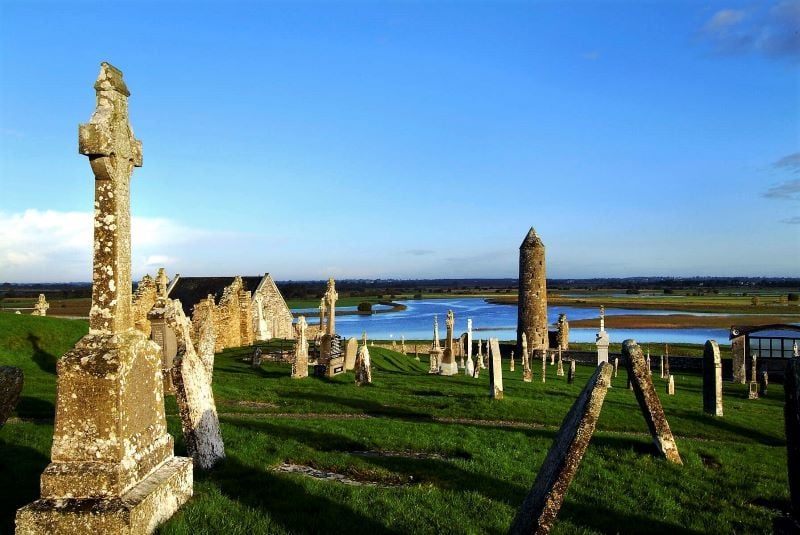
Clonmacnoise on the River Shannon in Co Offaly. (Ireland's Content Pool)
The River Barrow
The River Barrow, An Bhearú in Irish, is second to the Shannon at 119 miles (192km) long. With the rivers Suir and Nore, it forms the Three Sisters. The Barrow rises at Glenbarrow in the Slieve Bloom Mountains in Co. Laois and drains into Waterford Harbour. The point where the Three Sisters meet is called the Cumar na dTrí Uisce in Irish, meaning ‘the confluence of the three waters.’
On the western bank of the Barrow is a small town called Leighlinsbridge. There is a large mound here, reputed to be the ancient site of the fort of Dinn Rig, the seat of the Kings of Leinster. A great battle was fought here during the 2nd or 3rd century AD.
The story goes that Covac of Bregia, Cobthach in Irish, murdered his brother Laoighaire Lorc, King of Leinster, and all his family at Dinn Rig. He spared the young prince Moen, however, because he couldn’t speak and therefore was unable to make his claim on the throne. A more gruesome version of the story claims that Covac forced the boy to eat the hearts of his father and brother, thus traumatizing the boy so much that he lost his powers of speech.
Moen was fostered with a harper named Craftine in Munster. One day, he suffered a blow to the head during a hurling match, which led to the recovery of his ability to speak. He then gave himself a new name, Labraid Loingseach, and fled to Gaul to escape the murderous intention of his uncle Covac. Through many heroic deeds, he amassed a following of two thousand warriors, calling themselves the Laigin, which means ‘spearmen’. They successfully invaded Leinster and captured Dinn Rig. Under the pretense of friendship, Moen invited Covac to a feast, but locked him and thirty of his entourage in the great hall, burning it to the ground, and thus avenging the murders of his family.
As with most other large rivers, the Barrow has long served as a military and commercial highway. Armies were ferried along it, and later, barges transported malting barley to Dublin to make the famous black brew, Guinness. The river is now designated a Special Area of Conservation.

Clashganny lock on the River Barrow, Co Carlow (Ireland's Content Pool)
The River Suir
The beautiful River Suir, Abhainn na Siúre in Irish, is another of the Three Sisters and flows 115 miles (185km) from the slopes of the Devil’s Bit Mountain, Bearnán Éile in Irish, Co. Tipperary, into the Atlantic at Waterford. St Patrick is said to have banished a ‘devil’ from a cave on the mountain. The creature was so enraged, it took a bite out of the top of the hill, where a large notch can be seen today. One of its teeth broke and fell from its mouth to form the Rock of Cashel.
Interestingly, the Book of Dimma is said to have been discovered in a cave on this mountain in 1789. This ancient document is an illuminated manuscript copy of the Four Gospels written by St Gronan in the monastery of Roscrea in the 8th century AD. How it got there is a mystery, but it now resides in the library at Trinity College in Dublin.
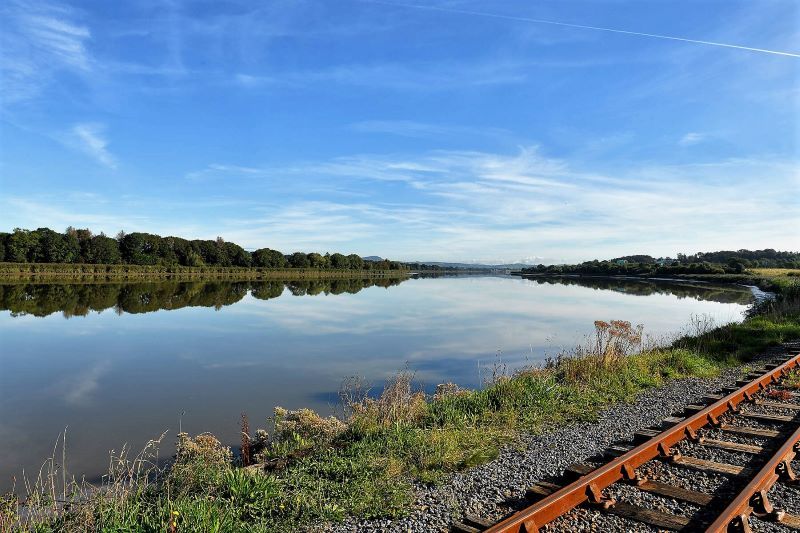
River Suir in Co Waterford. (Ireland's Content Pool)
The Blackwater of Munster
Our third-longest river is the Blackwater of Munster, at 105 miles (169km). In Irish, it is called An Uisce Dubh, but is also known as An Abhainn Mhór, ‘the Great River.’ It rises in the Mullaghareirk Mountains in Co. Kerry, and flows east into Co Waterford before turning south and draining into the Celtic Sea at Youghal Harbour. This river is said to have the best salmon fishing in Ireland.
The ancient kingdom of Caoille covers approximately 250 sq miles of the Blackwater Valley. In the 3rd century AD, High King Cormac mac Airt decided to raise taxes from Fiacha, King of Munster. Fiacha felt he had paid enough tax, and so inevitably they went to war. Cormac’s Druids made the river and springs run dry, thus depriving the people of Munster access to water. Fiacha called upon Mogh Ruith, a powerful blind magician, for help. Mogh Ruith restored the water and conjured up terrible magical hounds that devoured Cormac’s Druids. His breath turned into storms that blew devastatingly over Cormac’s warriors, turning them to stone. Cormac was defeated, and Fiacha gave the lands of Caoille to Mogh Ruith in reward.
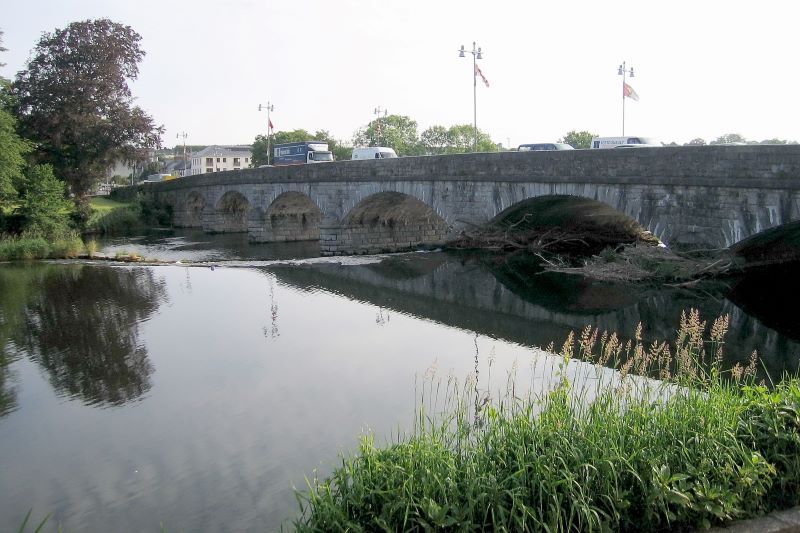
The River Blackwater in Fermoy, Co Cork. (Public Domain)
The River Nore
The River Nore, An Fheoir in Irish, is the third of the Three Sisters, also rising on the Devil’s Bit and flowing for 87 miles (140km) before emptying into the Celtic Sea at Waterford Harbour. A lovely 10km walking trail follows the river from Thomastown to Inistiogue, passing the ruins of Grennan Castle, built by Strongbow’s son-in-law in the 13th century AD, and Dysart Castle, home of philosopher and Bishop George Berkley.
The Nore Valley is sometimes called the Valley of Death as over 100 ancient burial sites have been discovered there. Rathbeagh in Lisdowney, Rath Bheithigh in Irish, meaning ‘the fort of birch trees’, is the site of a hill fort said to have been built by Eireamhon of the Milesians on the west bank of the Nore.
After defeating the Tuatha de Denann at Tailten, or Teltown near Kells in Co Meath, he and his brother Eibher divided the ruling of Ireland between them; he took the north, and Eibher took the south. After a year or two, a dispute arose over border territories, and the two brothers clashed at Brí Damh, near Gashill in Co Offaly. Eibher was defeated and killed, leaving Eireamhon the High King of all Ireland. He ruled for fifteen years and is said to be buried at Rathbeagh.
I can’t leave the River Nore without telling you the macabre tale of Dame Alice Kyteler of Kilkenny. She was a noblewoman who married four times, but each of her husbands suffered early and suspicious deaths. Eventually, in 1324 AD, Alice was accused of poisoning them, denying the faith, using sorcery, sacrificing animals to demons, and using blasphemy. She was tried at Kilkenny Castle by the Bishop of Ossary, Richard de Ledrede. Dame Alice escaped and was believed to have fled to England. She was never seen again.
Bishop Ledrede then had Alice’s servant, Petronella, tortured, which, not surprisingly, led to a confession and the implication of Alice. Poor Petronella was flogged before being burned at the stake on November 3, 1324, AD. She was the first person in Ireland to be burned at the stake for witchcraft.
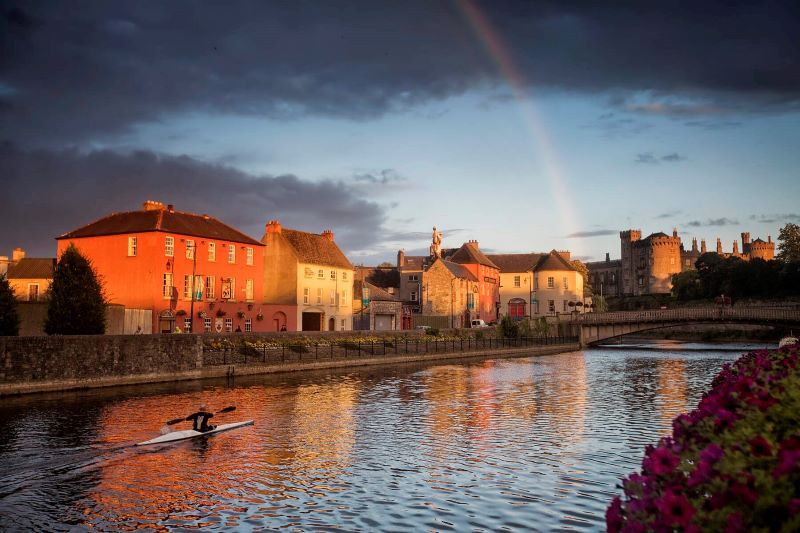
River Nore in Co Kilkenny. (Ireland's Content Pool)
The River Bann
The River Bann, An Bhanna in Irish, means the ‘white river.’ At 99 miles (159km), it is Ulster’s longest river, rising in the Mourne Mountains in Co Down and flowing into Lough Neagh, from which the Lower Bann then flows into the Atlantic Ocean at Portstewart.
Magilligan Strand, Trá mhic Giollagáin in Irish, is a seven-mile stretch of sandy beach at the mouth of the Bann, popular with walkers, swimmers, and surfers alike.
Just off the coast of Magilligan Strand lies a three-mile-long sandbank, known as Tonn’s Bank. Here, legend has it that the Storm God is buried. He was once a Denann chieftain who was killed fighting the Milesians. After his death, he became associated with the Irish Sea-God, Manannán mac Lir, and it is said that when storms blow up off the coast of Inishowen Head, his spirit walks free. A local saying goes, ‘Manannán is angry today,’ whenever the seas are rough.
The mouth of the River Bann has other names, too. It is sometimes called Inbher Glas, meaning ‘green harbor’ in Old Irish, but it is also named Inbher Tuag after the tragic Princess Tuag of Tara. As a young girl, she was fostered by the High King Conaire and had a great retinue of ladies and waiting women to serve her.
She was so beautiful that no man was allowed near her, for she was destined to be married to a great King. Manannán desired her, however, and sent his druid, Ferdia, to steal her away from Tara. Ferdia disguised himself as a woman, and sang a sleeping spell over her (probably the Suantrai), and thus managed to escape with her. He carried her to the mouth of the River Bann and set her down on the sand while he went to get a boat in which to take her to Manannán’s land. She was still sleeping. As the tide rose, a great wave washed over the Tonn and carried her out to sea, where she was sadly drowned. Ferdia did not get off lightly, however, for Manannán was so furious that he had his Druid killed.

River Bann. (Ireland's Content Pool)
*Ali Isaac lives in beautiful rural Co. Cavan in Ireland, and is the author of two books based on Irish mythology, “Conor Kelly and The Four Treasures of Eirean,” and “Conor Kelly and The Fenian King.” Ali regularly posts on Irish topics on her blog, www.aliisaacstoryteller.com.
* Originally published in 2014, updated in Dec 2025.
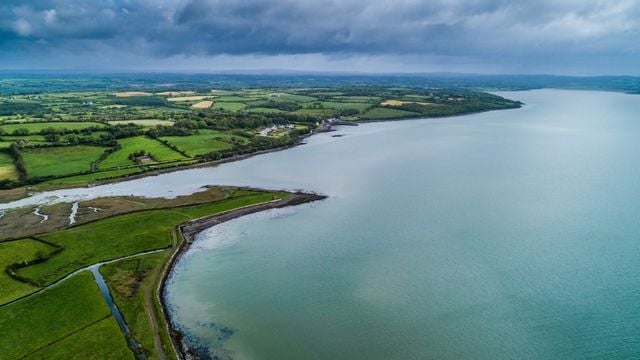
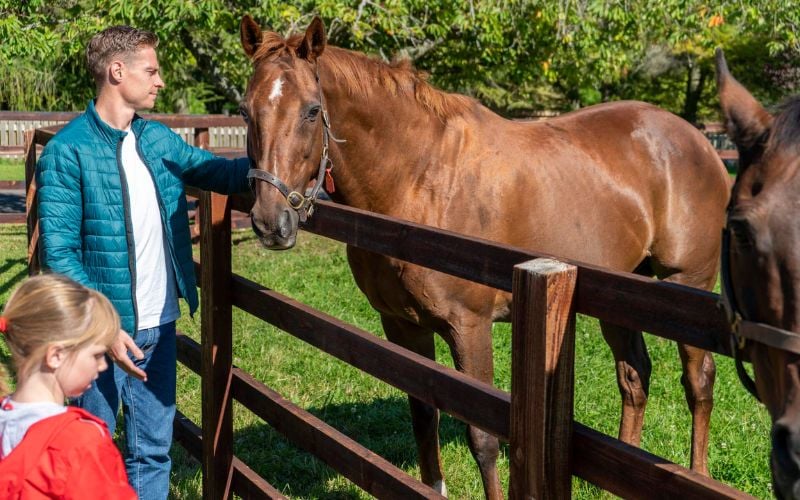
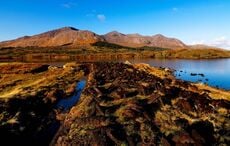

Comments